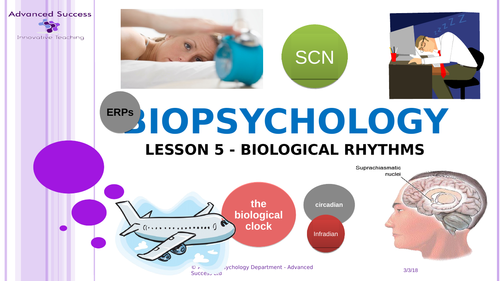

NEED a Lesson? Save yourself HOURS and HOURS of planning and preparation time.
This PowerPoint fully supports our popular Biopsychology Section of our Popular Student Paper 2 Workbook and covers the following:
Week 5 - Biological Rhythms
- Biological rhythms: circadian, infradian and ultradian and the difference between these rhythms.
- The effect of endogenous pacemakers and exogenous zeitgebers on the sleep/wake cycle.
Fully supported on our Popular Twitter Site: Psychexamhelp
Something went wrong, please try again later.
This resource hasn't been reviewed yet
To ensure quality for our reviews, only customers who have purchased this resource can review it
Report this resourceto let us know if it violates our terms and conditions.
Our customer service team will review your report and will be in touch.
£5.00